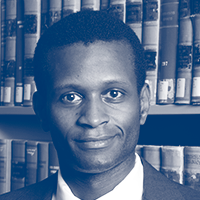Slavery is America’s original sin. Despite the bold commitment to equality in the Declaration of Independence, slavery was legal in all of the thirteen colonies in 1776. By the start of the Civil War, four million people, nearly all of African descent, were held as enslaved persons in 15 southern and border states. They represented one-eighth of the U.S. population in 1860.
Many think that slavery ended with the Emancipation Proclamation, issued by President Abraham Lincoln on January 1, 1863. However, the Emancipation Proclamation freed only enslaved persons held in the eleven Confederate states that had seceded, and only in the portion of those states not already under Union control.
The true abolition of slavery was achieved when the Thirteenth Amendment was ratified on December 6, 1865. The first section of the Amendment declares: “Neither slavery nor involuntary servitude, except as a punishment for crime whereof the party shall have been duly convicted, shall exist within the United States, or any place subject to their jurisdiction.” The Amendment is unique in the Constitution because it bars every person from holding enslaved persons or engaging in other forms of involuntary servitude, whereas most constitutional provisions only constrain or regulate the government. It is unique in another way as well: although the Constitution obliquely acknowledged and accommodated slavery in its original text, the Thirteenth Amendment was the first explicit mention of slavery in the Constitution.
The most immediate impact of the Thirteenth Amendment was to end chattel slavery as it was practiced in the southern United States. However, the Amendment also bars “involuntary servitude,” which covers a broader range of labor arrangements where a person is forced to work by the use or threatened use of physical or legal coercion. For example, the Thirteenth Amendment bans peonage, which occurs when a person is compelled to work to pay off a debt. Originally a Spanish practice, peonage was practiced in the New Mexico Territory and spread across the Southern United States after the Civil War. Former enslaved persons and other poor citizens became indebted to merchants and plantation owners for living and working expenses. Unable to repay their debts, they became trapped in a cycle of work-without-pay. The Supreme Court held this practice unconstitutional in 1911. Bailey v. Alabama (1911).
Most scholars also assume it would violate the Thirteenth Amendment to order specific performance of a service contract. An example of this situation would be where an employee has a contract to work for a full year but wants to leave after six months. Forcing the employee to continue to work instead of paying a financial penalty to get out of her contract would almost certainly violate the Thirteenth Amendment.
Notably, the Amendment does allow a person convicted of a crime to be forced to work. Thus, prison labor practices, from chain gangs to prison laundries, do not run afoul of the Thirteenth Amendment. The Thirteenth Amendment has also been interpreted to permit the government to require certain forms of public service, presumably extending to military service and jury duty.
In addition to the first section’s ban on slavery and involuntary servitude, the second section of the Thirteenth Amendment gives Congress the “power to enforce” that ban by passing “appropriate legislation.” This provision allows Congress to pass laws pertaining to practices that violate the Amendment. For example, the Anti-Peonage Act of 1867 prohibits peonage, and another federal law, 18 U.S.C. § 1592, makes it a crime to take somebody’s passport or other official documents for the purpose of holding her as an enslaved person.
Section Two of the Thirteenth Amendment has broader applicability as well. The Supreme Court has long held that this provision also allows Congress to pass laws to eradicate the “badges and incidents of slavery.” The Supreme Court has never defined the full scope of what the badges and incidents of slavery are, and instead has left it to Congress to flesh out a definition. In The Civil Rights Cases (1883), the Court held that racial discrimination in private inns, theaters, and public transportation did not qualify as a badge or incident of slavery. In a series of cases in the 1960s and 1970s, however, the Court held that racial discrimination by private housing developers and private schools is among the badges and incidents of slavery that Congress may outlaw under Section Two of the Thirteenth Amendment. Most recently, Congress has determined that Section Two provides a basis for a portion of the Matthew Shepard and James Byrd, Jr. Hate Crimes Prevention Act of 2009 (which criminalizes race-based hate crimes) and the Trafficking Victims Protection Act (which penalizes human trafficking and protects its survivors). The Supreme Court has yet to evaluate these laws.
Despite its significance in American history, the Thirteenth Amendment is not one of the more frequently invoked parts of our Constitution today. Now that slavery is a part of our past, the Amendment’s current relevance is subject to debate. Does it govern the fairness of modern labor practices? Does it empower Congress to pass broad-ranging civil rights laws? Whatever the outcome of those debates, though, the Thirteenth Amendment deserves recognition as an historic and solemn promise that slavery will never again exist in the United States.






